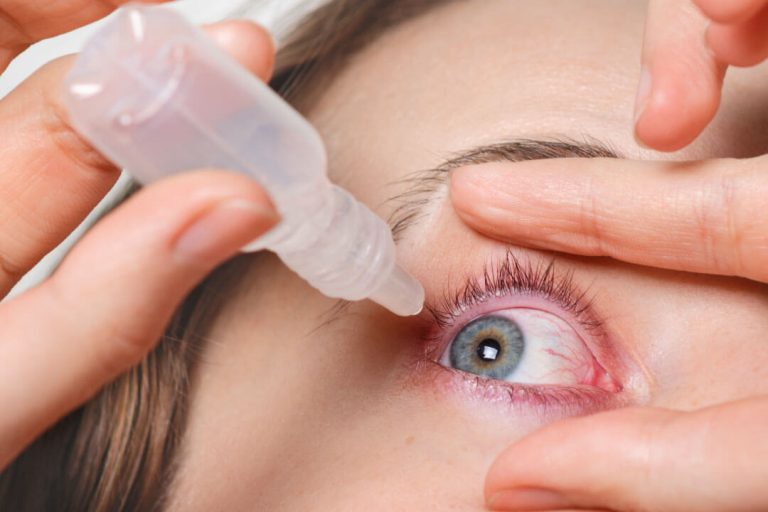Dry Eye - The Importance of Moisture for your Eyes
Moisture is vital for our eyes. In fact, in healthy eyes, every time we blink, we spread a little layer of moisture across the eye. A bit like having the windscreen wipers on when driving the car, providing a nice layer of liquid across the surface with each “swoosh”.
If you don’t have this little layer of tears working properly on your eyes (and remaining there between blinks) it may be that you are suffering from dry eye, which over time, can damage the surface of the eyeball.
The causes of dry eye
While anyone can suffer from dry eye, we’ve found that it is particularly common in older women, those with a vitamin A deficiency and (perhaps surprisingly) in people with arthritis. Other possible causes include the climate (particularly a dry one), irritants such as smoke or dust, trauma to the eye, particular medications and long periods looking at screens.

The symptoms of dry eye
If you are experiencing any of these symptoms, it is possible you are suffering from dry eye. Of course some of these symptoms can be attributed to other eye conditions so it is vital that you follow up with us for a comprehensive eye examination if you have any concerns.
Possible symptoms could include:
- Tired or red eyes
- An itchy feeling, or a scratchy feeling (like you might have a bit of sand in your eye)
- Blurred vision
- Stinging or burning
- Mucus
- Sensitivity around light
- Difficulty wearing contact lenses
- Difficulty driving at night, or seeing in poor light.
When you come in to see us to talk about any of these symptoms, as well as your comprehensive eye examination we may also do a couple of little extra tests, such as putting a yellow dye in your eye, and measuring the amount of tear production – both of which can help us to diagnose and then treat your dry eye.

Is there a cure for dry eye?
Sadly no, but fortunately there are quite a few things we can try to manage dry eye, to help alleviate your symptoms and make you feel much better, such as lubricating drops or medication. We may also talk to you about how you can try to blink more, or ways you can increase the amount of humidity in your environment, particularly if you work in air conditioning or near fans a lot of the time (such as drivers who may have the car fan pointed toward them).

Prevention is always better than cure!
As dry eye is something that can affect anyone, we like to encourage our patients to practice some good eye health routines to minimise their chances of developing dry eye disease.
Fortunately, many of the basic preventative measures you can take will also help with your general eye health overall so it’s win, win really!
Take a closer look at your environment – if you work in dry conditions, such as on an aeroplane where the air is closely controlled, indoors where there is constant air conditioning, in dry environments (such as the snow, or desert) or in places where you might often be in front of a fan (as we mentioned earlier, this is often in a vehicle), your eyes are exposed to less moisture.
Sometimes being in these conditions is unavoidable, but you can try to improve your environment by adding a humidifier to the room, wearing protective eyewear or making sure you aren’t in the direct line of airflow from any fans.

Give your eyes a break – be aware of just how often you blink, and try to increase it if you can to give your eyes a bit of a rest. Normally, we blink around 15-20 times per minute, so that’s once every three or four seconds. This declines considerably when we’re looking at a screen. In fact, some studies have shown that we blink less than half the amount when looking at a screen than when we’re not!
Up your intake of vitamin A – A vitamin A deficiency may contribute to all sorts of eye issues (even blindness), so upping your intake of vitamin A will help to protect your eye health in general, as well as help to prevent dry eye. Vitamin A can be found in a number of foods such as meat (and in particular liver), fish (go for the oily ones like mackerel and salmon), poultry and dairy. It is also found in plant-based foods, particularly the orange ones (carrots, pumpkin, sweet potatoes, apricots) and leafy green ones (kale, spinach and collard greens).

What’s next?
The best course of action if you have any concerns about dry eye disease (or any other eye issue) is to make an appointment. We’ll conduct a comprehensive eye examination and prescribe an appropriate course of treatment for you. You can book via our online system, or give us a call on (03) 9558 4499.
This website does not provide medical advice. It is intended for informational purposes only. It is not a substitute for professional medical advice, diagnosis or treatment. Never ignore professional medical advice in seeking treatment. If you think you may have a medical emergency, immediately dial Triple 0 (000).
Sources:
Better Health, Dry Eye, https://www.betterhealth.vic.gov.au/health/conditionsandtreatments/dry-eye. Accessed January 2021.
Mayo Clinic, Dry Eyes, https://www.mayoclinic.org/diseases-conditions/dry-eyes/symptoms-causes/syc-20371863. Accessed January 2021.
Healthline, 8 Signs and Symptoms of Vitamin A Deficiency, https://www.healthline.com/nutrition/vitamin-a-deficiency-symptoms. Accessed January 2021.
Healthline, Nutrition: Great Foods for Getting Vitamins A to K in your Diet, https://www.healthline.com/health/foods-nutrition-vitamins-a-b-c-d-e-k. Accessed January 2021.
MedLine Plus (US National Library of Medicine), Vitamin A, https://medlineplus.gov/ency/article/002400.htm. Accessed January 2021.
WebMD, Prevent Eyestrain from Digital Devices, https://www.webmd.com/eye-health/prevent-digital-eyestrain#:~:text=Why%20Do%20Screens%20Cause%20Eyestrain,or%20playing%20on%20a%20screen. Accessed January 2021.
